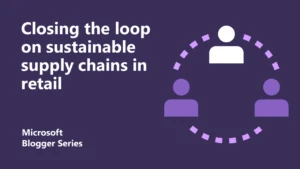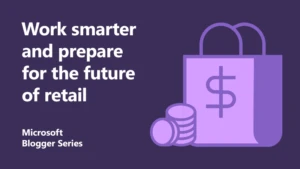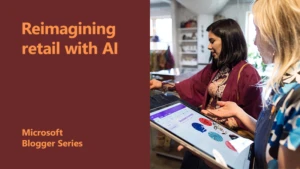
Joining the dots: What does sustainability mean for retailers?
What is sustainability? As a Global Sustainability Specialist for Microsoft with a passion for all things sustainable, it’s a question I get asked a lot. It’s also a question I like to ask others, and I’m always curious to hear the answer.

Because that’s the thing about sustainability: it means different things to different people.
For me, sustainability is about looking at the world from the outside in. That means looking at all of our impacts and trying to reconcile them as individuals. Whether that’s how much plastic, or water, or something else we’re wasting, what’s important is that we know we could do something better with it. Then it’s about looking at the impacts of our actions on others. Where do the products we buy come from? Where is our waste going? We need to understand the social implications of the actions we take.
Has the world woken up to sustainability? I’m not so sure. There’s still a lot of greenwashing from businesses across all industries, retail included, and people are getting wise to that. When I was at COP26 recently, many people were asking businesses like Microsoft: “Well, what do you actually do?” That type of finger pointing is good, because it can spark more rigor. Every retail business now needs to be able to say: “This is what we do” and to say it with confidence.
Here I want to unpack some of the big sustainability pieces I see for retailers now and going forward. I hope it will help UK retailers to take steps towards delivery of tangible, lasting impacts.
The importance of visibility, transparency and honesty in sustainability
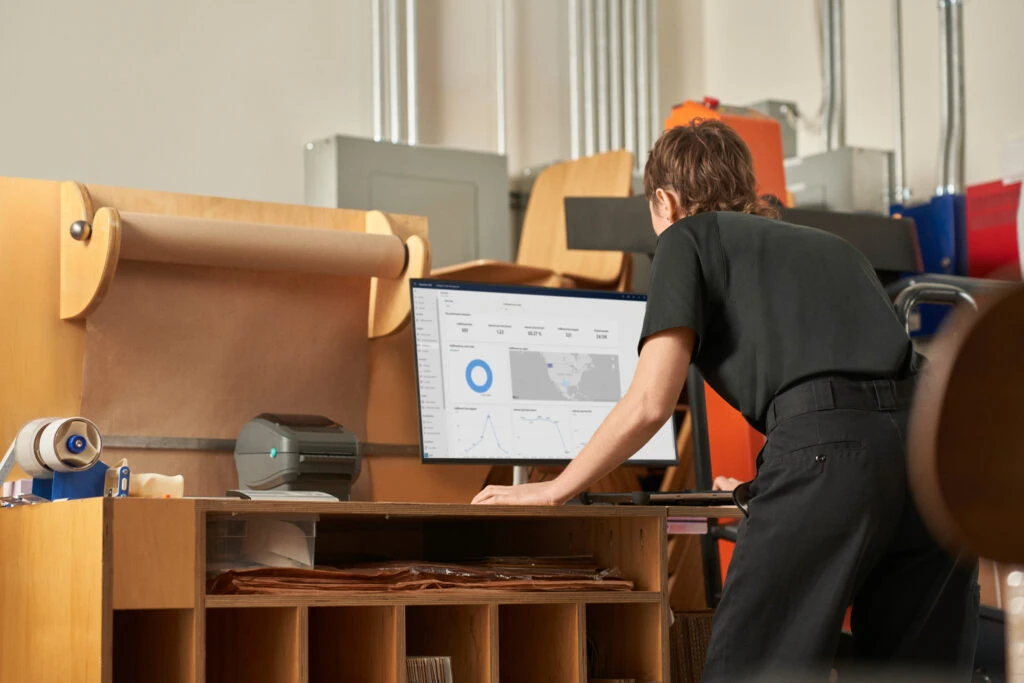
The most important steps to sustainability are transparency and visibility. Retailers have to be able to put their hands on their hearts and say that they know where the products they stock have come from. And not just on a surface level; they need to know right down to the raw materials.
Data visibility is becoming more and more achievable. Take cotton, for example. People are now doing DNA tracking for cotton to learn whether it’s been ethically sourced or recycled. But there’s still a way to go, and the grey areas get greyer the further you go down the supply chain. Retailers need to be transparent about that. If you’ve got some grey areas, just acknowledge them. It’s much better to be honest and say you don’t know rather than pretending that you do.
The flip side is making sure that information is given correctly to consumers. As a result, people will understand what they’re buying and the impact of that product. This translates to consumer behaviour too. One thing our friends at a global consumer packaged goods organisation are doing is looking at how they can change people’s behaviours about showering. Why? Because one of the biggest problems for water waste is not the amount of water that they use to make a bottle of shampoo. It’s the amount of time that all of us spend standing in a shower wasting water to wash our hair. It’s a great example of a company that’s gently nudging consumers to use its products in a more sustainable way.
Measuring sustainability across the supply chain
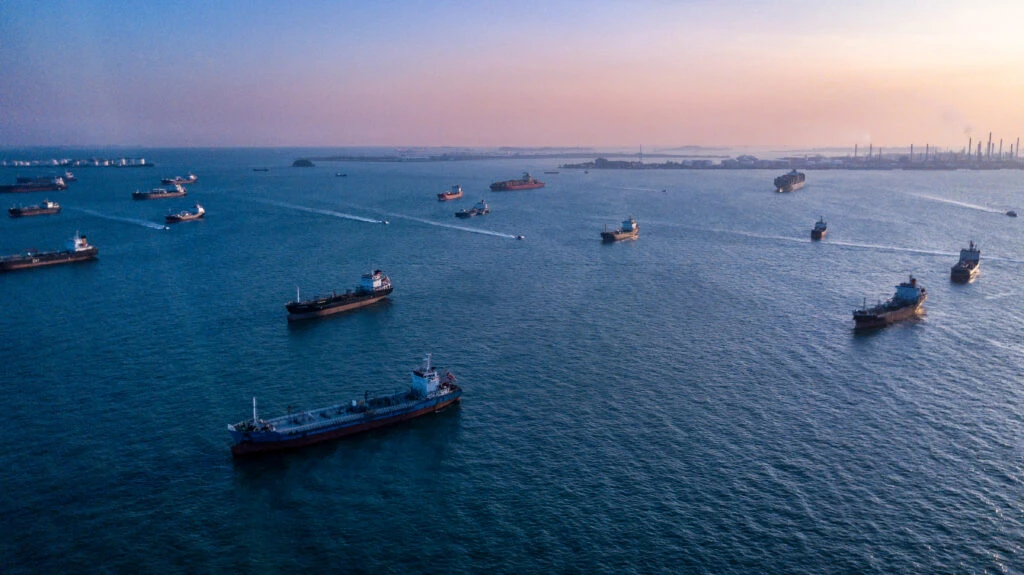
In order to have a meaningful conversation about sustainability, you need to be able to measure your impact. So one of the first things retailers need to do is establish their base levels. Where are you today? You can start very simply by looking at the totals of all your invoices from your utility bills. That gives you a starting point.
The supply chain is also a good tool to measure against. Move from one end of the chain to the other and analyse the impact of each stage. From there you can start to identify areas that you can improve.
Of course, supply chains are complex, and having full visibility end-to-end is challenging, especially for bigger retailers where the supply chain is huge. How do you get the assurance that the bottle of shampoo you stock is actually being sourced correctly, right the way down to the people in a palm oil field in Indonesia?
It’s a concern we’ve got ourselves at Microsoft. We’ve got our responsible sourcing team. But how do we actually know that Microsoft products like Surface have been responsibly sourced, right the way back down to a guy digging away at a mine to get some cobalt to go into the battery on one of our devices?
That’s where technology has a huge role to play, going right along the upstream supply chain. And it’s where the Microsoft Cloud for Sustainability can support. We can start to track and report against different aspects of the supply chain, so we can mitigate the negative social impacts you might encounter at different points. That goes beyond just environmental waste and covers broader societal issues related to recruitment, fair pay, working conditions, all sorts of areas.
Joining the dots for a more sustainable future in retail
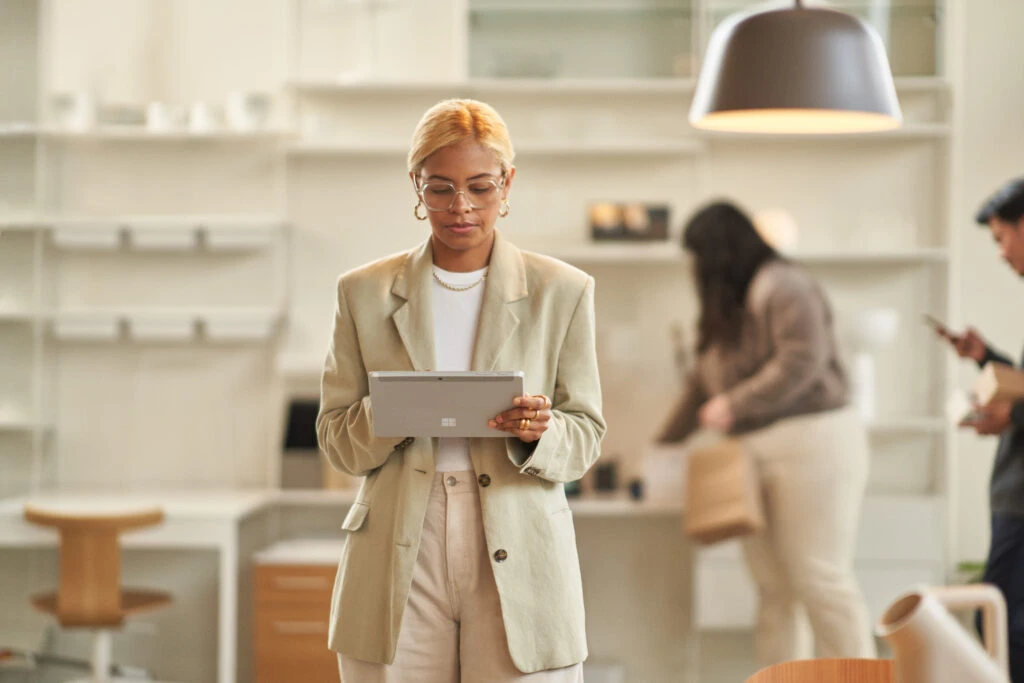
A lot of the trends that I see emerging in retail are about joining the dots. Whether that’s joining data points across the supply chain, or making new partnership connections between retailers, coming together seems to be a trend that’s snowballing.
There are sustainability benefits of that trend, but we need to tap into them more. Why aren’t larger retailers bringing together start-ups and creative technologists to offer more just-in-time manufacturing services in-store? We can shorten supply chains in this way, while transforming in-store shopping into the experience that consumers expect.
But perhaps the greatest opportunity to join the dots in retail and transform the supply chain into a more sustainable model lies in the emerging circular economy. And again, the larger retailers need to take a lead here. Why aren’t the big food retailers sponsoring start-ups to create a vertical farming system that could help them bring more circularity to their supply chain? The technology is there to make it possible, and it would have a huge benefit for those retailers and the environment. But the missing ingredient is the desire and support to make it happen.
That, ultimately, is what needs to change: retailers need to commit. To bring the disparate parts of their supply chain together. To use data to talk meaningfully about the products they sell. And finally, to work with start-ups and other partners to build more sustainable ways of working.
That’s the transformation we need to see in retail. It’s the transformation tomorrow’s consumers expect.
Find out more
Get the Sustainability Executive Playbook
Create the new intelligent supply chain
Drive operational resiliency with connected people and systems
Ensuring products are made in a sustainable way has never been more important
About the author

Andrew is part of Microsoft’s Global Sustainability industry team, focusing on architecting digital transformations along with guiding growth and compete strategies across all industries sectors but with a focus on manufacturing, retail and supply chains. He supports organisations with new technology led capabilities, strategies and insights that will fundamentally reinvent their products, services and business models.
Andrew is passionate about helping business drive sustained growth, agile innovation and operational excellence.
He has worked across many industry sectors during his 25+ years, including high tech discrete manufacturing, consumer packaged goods, financial services, education and local/regional government as well directly engaging with the broad ecosystems of partners, ISV and non-for-profit organisations. His further area of speciality includes social, environmental and economic sustainability where he has led several global initiatives to tackle economic and skilling gaps across manufacturing and agriculture.
Andrew’s wide breadth of experience has enabled him to directly engage across Microsoft’s product engineering research and development as well into their responsible sourcing supply chain team.

